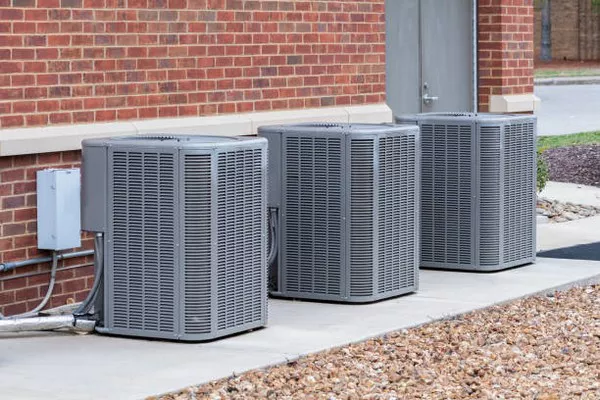Air compressors serve as vital tools across various industries, from automotive workshops to manufacturing plants, enabling the efficient use of pneumatic tools and equipment. The cost of an air compressor can vary widely depending on several factors, including type, size, capacity, and intended use. This article delves into these considerations to provide a comprehensive overview of how much an air compressor typically costs.
Types of Air Compressors
Air compressors come in several types, each designed for specific applications:
Reciprocating (Piston) Air Compressors: These are the most common type, operating with pistons driven by a crankshaft to deliver air at high pressure. They are suitable for intermittent use and are available in both single-stage and two-stage configurations.
Rotary Screw Air Compressors: Ideal for continuous use, rotary screw compressors use two meshing helical screws to compress the air. They are efficient and relatively quiet compared to reciprocating compressors.
Centrifugal Air Compressors: Used in large industrial applications, these compressors use high-speed rotating impellers to accelerate and then decelerate air to increase its pressure.
Scroll Compressors: Commonly used in small to medium-sized applications, scroll compressors use orbiting and fixed spirals to compress air.
Each type varies significantly in cost due to differences in design complexity, efficiency, and manufacturing requirements.
Cost Factors
Several factors influence the cost of an air compressor:
Power and Capacity: The power rating (measured in horsepower, HP) and the capacity (measured in cubic feet per minute, CFM) directly affect the cost. Higher HP and CFM ratings generally result in a more expensive compressor due to larger and more robust components.
Type of Compressor: As mentioned earlier, the type of compressor significantly impacts its cost. Reciprocating compressors tend to be less expensive compared to rotary screw or centrifugal compressors, which require more sophisticated technology and materials.
Brand and Quality: Established brands with reputations for reliability and quality often command higher prices. While cheaper alternatives exist, they may lack durability and warranty coverage.
Size and Portability: Larger capacity and portable compressors usually cost more than smaller, stationary units. Portable compressors are convenient but often sacrifice tank size and power output for mobility.
Additional Features: Certain features, such as variable speed drives for energy efficiency, integrated air dryers, noise-reducing enclosures, and advanced control systems, can significantly increase the cost but offer added benefits in specific applications.
Cost Ranges by Type
To provide a clearer picture, here are approximate cost ranges for different types of air compressors:
Reciprocating Air Compressors: Small, DIY models can cost as little as $100 to $500 for basic applications. Larger industrial models with higher HP ratings and CFM capacities range from $1,000 to $10,000 or more, depending on specifications and brand.
Rotary Screw Air Compressors: These are more expensive due to their continuous-duty capability and efficiency. Prices typically start around $2,000 for smaller units suitable for workshops and go up to $30,000 or more for large industrial units.
Centrifugal Air Compressors: Due to their complex design and suitability for large-scale industrial use, prices for centrifugal compressors usually start at $10,000 and can exceed $100,000 depending on size and application requirements.
Scroll Compressors: Generally priced between $500 and $5,000, scroll compressors are compact and efficient but typically have lower CFM capacities suited for lighter industrial or laboratory use.
Additional Costs to Consider
Beyond the initial purchase price, there are other costs associated with owning and operating an air compressor:
Installation: Depending on the complexity of the compressor and its intended location, installation costs can vary. This may include electrical work, plumbing for air lines, and foundation or mounting requirements.
Maintenance: Regular maintenance is essential to ensure the longevity and efficiency of the compressor. Costs for maintenance include oil changes, filter replacements, and periodic inspections by qualified technicians.
Operating Costs: Factors such as electricity consumption, air leaks, and the need for additional equipment like air dryers or filters contribute to the overall operating costs over the compressor’s lifetime.
Accessories: Accessories such as air hoses, fittings, pressure regulators, and pneumatic tools are often necessary additions, each with its own cost that should be factored into the total investment.
Choosing the Right Air Compressor
Selecting the appropriate air compressor involves considering several key factors:
Application Requirements: Determine the specific tasks the compressor will perform and the air pressure and CFM requirements of the tools or equipment it will power.
Budget: Establish a budget that not only covers the initial purchase but also installation, maintenance, and operational costs over the compressor’s lifespan.
Future Growth: Anticipate future needs and ensure the compressor chosen can accommodate potential increases in demand without requiring premature replacement.
Energy Efficiency: Consider compressors with energy-efficient features like variable speed drives (VSD) or integrated air dryers to reduce long-term operating costs.
Noise Considerations: In environments where noise is a concern, choose compressors with noise-reducing features or consider locating the compressor in a sound-insulated room or enclosure.
See Also How To Use Stanley Fatmax Air Compressor
Conclusion
The cost of an air compressor varies widely depending on factors such as type, capacity, brand, and additional features. While initial purchase price is a significant consideration, it is essential to account for installation, maintenance, and operational costs over the compressor’s lifetime. By carefully evaluating these factors and understanding your specific application requirements, you can make an informed decision that balances upfront investment with long-term efficiency and reliability.
Related Topics

